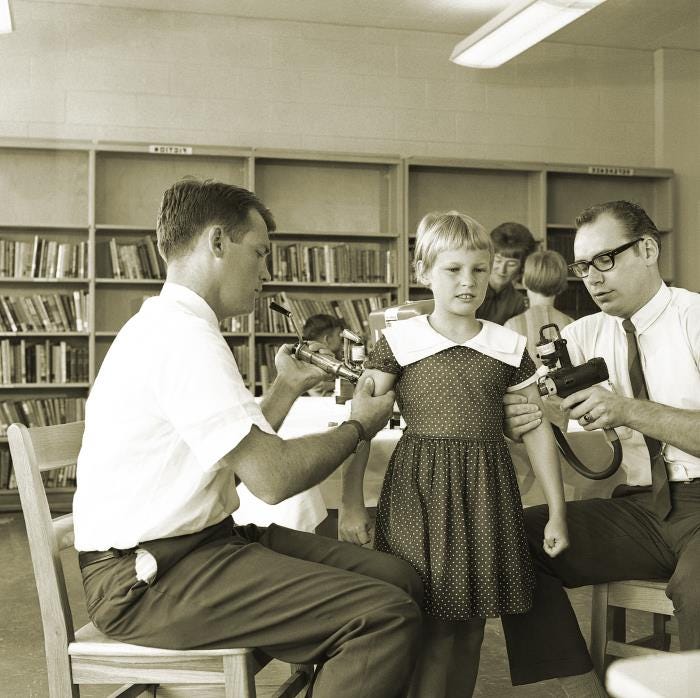Dose sparing and the history of the fight to control pox viruses
How the bifurcated needle accelerated the eradication of smallpox
In a press conference today, FDA Commissioner Robert Califf said the agency was considering whether Jynneos, the only vaccine licensed to prevent monkeypox, could be given intradermally. If approved, the approach would use just one-fifth of the dose, enabling a dramatic expansion of our constrained supply.
This is an interesting bit of parallel history. Smallpox, a deadlier and more infectious cousin of monkeypox, was declared eradicated in 1980 thanks in part to the invention of the bifurcated needle. For much of the eradication campaign, vaccines were administered using jet injectors, finicky and difficult to use appliances that were prone to breaking down.

In 1965, microbiologist Benjamin Rubin invented an alternative. He designed a needle with two tiny prongs that, when dipped into a vial, captured a tiny dot of vaccine. Vaccinators used the needle to make multiple punctures on the arm of the vaccinee, introducing the product into the skin. The needles were cheap, easy to sterilize, and required very little training. They also used less product than jet injectors and thus allowed vaccinators to stretch supply, an advantage that echoes today’s announcement.
Dr. DA Henderson, leader of the WHO’s Global Smallpox Eradication Program, called the device a “miracle” in a 2015 interview. Bifurcated needles are still used to administer ACAM2000, a smallpox vaccine held in the Strategic National Stockpile.

There is no indication that Jynneos would be administered using bifurcated needles if plans to give it intradermally go forward. Still, it’s interesting to see how lessons from the history of public health can help us to navigate challenges even today.




